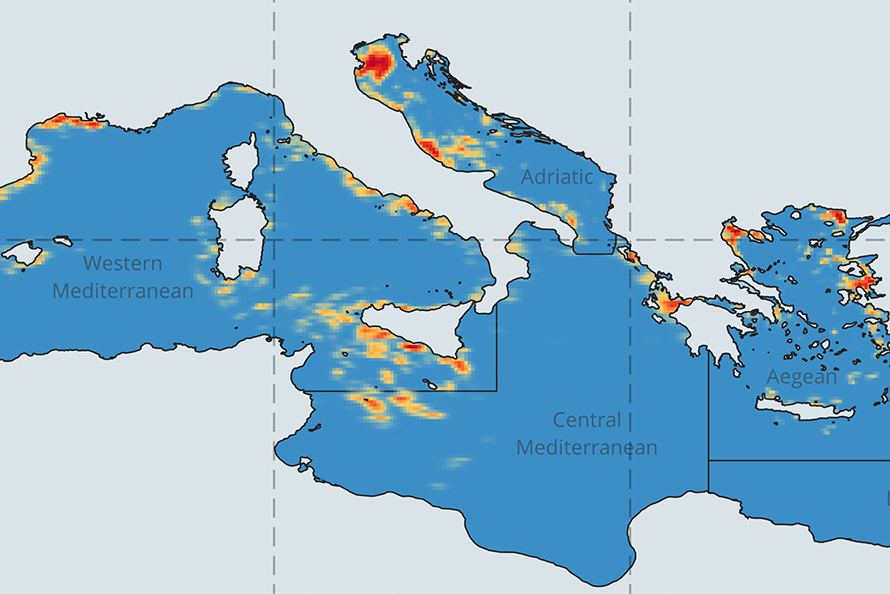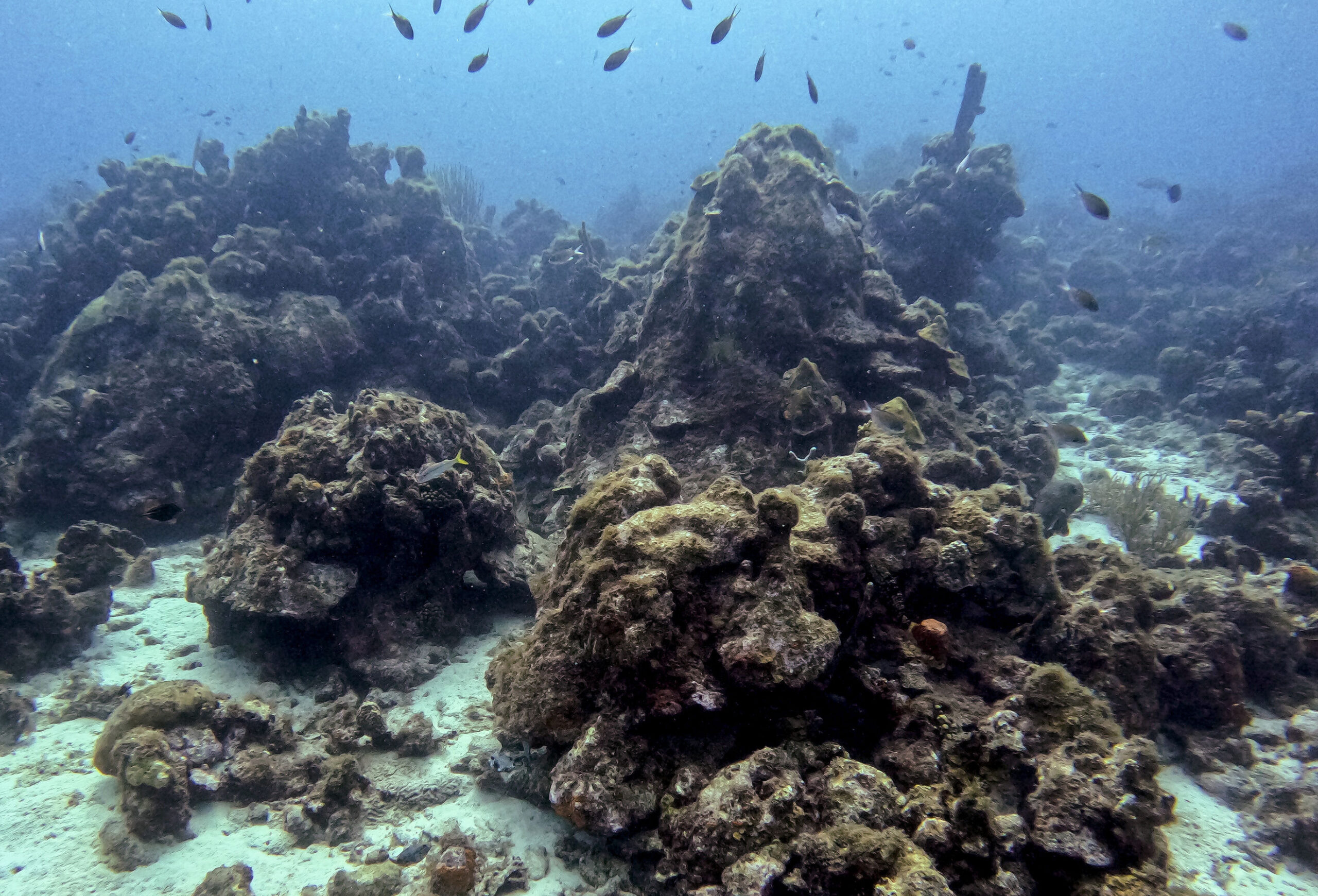Managing fisheries and ecosystems: current good practices and the EcoScope project experience – Frontiers

Report on Ecosystem-Based Management for Sustainable Marine Resources
Introduction: Aligning Marine Management with Sustainable Development Goals (SDGs)
Ecosystem-Based Management (EBM) provides a comprehensive framework for managing fisheries and marine resources. This approach is critical for addressing complex, interconnected challenges and advancing the United Nations Sustainable Development Goals (SDGs). The implementation of EBM requires balancing ecological health with socio-economic sustainability, directly supporting the objectives of several SDGs.
- SDG 14 (Life Below Water): EBM is fundamental to protecting marine ecosystems, ending overfishing, and ensuring the sustainable use of ocean resources.
- SDG 8 (Decent Work and Economic Growth): It seeks to resolve trade-offs between maximizing economic gains and maintaining healthy ecosystems for long-term fishery viability.
- SDG 12 (Responsible Consumption and Production): The principles of EBM promote the sustainable management and efficient use of natural marine resources.
Key Challenges and EBM Objectives for SDG Attainment
Multifaceted Threats to Marine Ecosystems
Marine environments face a variety of threats that undermine sustainability and impede progress on global goals. EBM is designed to address these issues holistically.
- Climate change impacts (addresses SDG 13: Climate Action).
- Various forms of water pollution.
- Unsustainable fishing practices and their effect on trophic interactions.
- Socio-economic pressures on marine resources.
Core Objectives of EBM in Support of Global Goals
The objectives of EBM are designed to translate policy needs and legal requirements into actionable management strategies that support the SDGs.
- Achieve Sustainable Yields: Manage fishing at Maximum Sustainable Yield (MSY) to end overfishing, in line with SDG Target 14.4.
- Protect Marine Ecosystems: Establish ecosystem reference points, ban discards, avoid bycatch of protected species, and protect habitats, contributing to SDG Target 14.2.
- Promote Good Environmental Status: Implement measures such as effective marine protected areas and consider ecosystem effects from marine spatial planning, supporting SDG Target 14.5.
- Integrate Climate Considerations: Account for the effects of climate change on marine ecosystems, aligning with SDG 13.
The EcoScope Project: A Framework for SDG-Informed Fisheries Management
Project Mission and Interdisciplinary Approach
The EcoScope project was initiated to combat ecosystem degradation and unsustainable fisheries by developing an efficient, holistic, and ecosystem-based management approach. Its structure exemplifies the collaborative spirit required to achieve the SDGs.
- Primary Goal: To create a user-friendly system for policymakers and advisory bodies to implement sustainable fisheries management.
- Interdisciplinary Consortium: The project team includes biologists, modellers, economists, and social scientists, reflecting a commitment to integrated solutions as encouraged by SDG 17 (Partnerships for the Goals).
Key Deliverables for Knowledge and Capacity Building
EcoScope has produced a suite of tools to facilitate knowledge sharing, communication, and education, thereby enhancing scientific capacity and informing policy.
- Online Platform and Toolbox: These resources provide access to data, models, indicators, and management evaluation procedures, supporting evidence-based decision-making and contributing to SDG Target 14.a (Increase scientific knowledge).
- EcoScope Academy and Mobile Application: These platforms are designed for education and knowledge dissemination, promoting education for sustainable development as outlined in SDG Target 4.7.
Recommendations for Enhanced EBM Implementation
Strengthening Institutional Frameworks
While the EcoScope project has developed essential modules for EBM implementation, their effective integration requires a more direct and coordinated effort from key international and regional organizations.
- A formal research and managerial framework is needed to guide and coordinate EBM activities.
- Responsible organizations, including ICES, FAO, GFCM, and the European Commission, must take a leading role in establishing these frameworks.
- This coordinated action is essential for translating scientific tools into tangible policy, thereby accelerating progress towards achieving SDG 14 and related sustainable development targets.
Analysis of Sustainable Development Goals in the Article
1. Which SDGs are addressed or connected to the issues highlighted in the article?
- SDG 14: Life Below Water
- SDG 12: Responsible Consumption and Production
- SDG 13: Climate Action
- SDG 17: Partnerships for the Goals
2. What specific targets under those SDGs can be identified based on the article’s content?
-
SDG 14: Life Below Water
- Target 14.1: By 2025, prevent and significantly reduce marine pollution of all kinds, in particular from land-based activities, including marine debris and nutrient pollution. The article mentions that Ecosystem Based Management (EBM) needs to address “various forms of water pollution.”
- Target 14.2: By 2020, sustainably manage and protect marine and coastal ecosystems to avoid significant adverse impacts, including by strengthening their resilience, and take action for their restoration in order to achieve healthy and productive oceans. The article’s central theme is EBM, which is described as a “comprehensive way of managing fisheries and marine resources” to achieve “healthy ecosystems.”
- Target 14.4: By 2020, effectively regulate harvesting and end overfishing, illegal, unreported and unregulated fishing and destructive fishing practices and implement science-based management plans, in order to restore fish stocks in the shortest time feasible, at least to levels that can produce maximum sustainable yield. The article directly addresses this by mentioning EBM objectives like “Fishing at Maximum Sustainable Yield (MSY),” addressing “unsustainable fisheries,” and developing a “holistic, ecosystem-based approach to sustainable fisheries management.”
- Target 14.5: By 2020, conserve at least 10 per cent of coastal and marine areas, consistent with national and international law and based on the best available scientific information. The article explicitly lists “setting effective marine protected areas” as an example of an EBM objective.
- Target 14.a: Increase scientific knowledge, develop research capacity and transfer marine technology, taking into account the Intergovernmental Oceanographic Commission Criteria and Guidelines on the Transfer of Marine Technology, in order to improve ocean health and to enhance the contribution of marine biodiversity to the development of developing countries, in particular small island developing States and least developed countries. The EcoScope project, with its aim to develop an “efficient, holistic, ecosystem-based approach” and deliver an “online platform, toolbox, academy, and a mobile application,” directly contributes to increasing scientific knowledge and facilitating its use.
-
SDG 12: Responsible Consumption and Production
- Target 12.2: By 2030, achieve the sustainable management and efficient use of natural resources. The entire concept of EBM, as described in the article, aims to manage “fisheries and marine resources” sustainably, addressing “unsustainable fisheries” and the “trade-offs between maximizing economic gains versus sustainable fisheries.”
-
SDG 13: Climate Action
- Target 13.3: Improve education, awareness-raising and human and institutional capacity on climate change mitigation, adaptation, impact reduction and early warning. The article explicitly includes “accounting for the effects of climate change” as a key problem and objective for EBM.
-
SDG 17: Partnerships for the Goals
- Target 17.16: Enhance the Global Partnership for Sustainable Development, complemented by multi-stakeholder partnerships that mobilize and share knowledge, expertise, technology and financial resources, to support the achievement of the Sustainable Development Goals in all countries, in particular developing countries. The article highlights the “EcoScope consortium” as an “interdisciplinary advisory team of biologists, modellers, economists, and social scientists.”
- Target 17.17: Encourage and promote effective public, public-private and civil society partnerships, building on the experience and resourcing strategies of partnerships. The article calls for a “more direct approach by the responsible organizations, such as ICES, FAO, GFCM and the EC, is needed to set explicit and formal research and managerial frameworks for implementing and coordinating the EBM activities,” emphasizing the need for collaboration between different bodies.
3. Are there any indicators mentioned or implied in the article that can be used to measure progress towards the identified targets?
-
For Target 14.4 (End Overfishing):
- Indicator: Proportion of fish stocks within biologically sustainable levels (Indicator 14.4.1). The article directly mentions “Fishing at Maximum Sustainable Yield (MSY)” as a key objective, which is the primary concept used to measure this indicator.
- Indicator: Implementation of a “discards ban.” The article lists this as an EBM objective, which can be measured through compliance rates and discard volume data.
- Indicator: Reduction in “bycatch of protected species.” This is mentioned as an objective and can be measured by monitoring the frequency and volume of bycatch in fisheries.
-
For Target 14.2 (Protect Marine Ecosystems):
- Indicator: Achieving “good environmental status.” This is mentioned as an EBM objective and implies the use of a suite of ecological quality indicators to assess the health of marine ecosystems.
-
For Target 14.5 (Conserve Marine Areas):
- Indicator: Coverage of protected areas in relation to marine areas (Indicator 14.5.1). The article’s mention of “setting effective marine protected areas” implies measuring the extent and effectiveness of these designated zones.
-
For Target 14.a (Increase Scientific Knowledge):
- Indicator: Development and use of scientific tools. The article describes the end products of the EcoScope project: an “online platform, toolbox, academy, and a mobile application.” The creation, maintenance, and user engagement with these tools serve as direct indicators of progress in knowledge sharing and capacity building.
4. Table of SDGs, Targets, and Indicators
| SDGs | Targets | Indicators Identified in the Article |
|---|---|---|
| SDG 14: Life Below Water |
14.1: Reduce marine pollution. 14.2: Protect and restore ecosystems. 14.4: End overfishing and promote sustainable fishing. 14.5: Conserve coastal and marine areas. 14.a: Increase scientific knowledge and research capacity. |
– Addressing “various forms of water pollution.” – Achieving “good environmental status.” – Fishing at “Maximum Sustainable Yield (MSY).” – Implementation of a “discards ban.” – “Avoiding bycatch of protected species.” – “Setting effective marine protected areas.” – Development of an “online platform, toolbox, academy, and a mobile application” (EcoScope project). |
| SDG 12: Responsible Consumption and Production | 12.2: Achieve sustainable management and efficient use of natural resources. | – Implementation of “Ecosystem Based Management (EBM)” for fisheries. – Addressing “trade-offs between maximizing economic gains versus sustainable fisheries.” |
| SDG 13: Climate Action | 13.3: Improve education and capacity on climate change. | – “Accounting for the effects of climate change” in management plans. |
| SDG 17: Partnerships for the Goals |
17.16: Enhance the Global Partnership for Sustainable Development. 17.17: Encourage effective public, public-private and civil society partnerships. |
– Formation of the “EcoScope consortium” as an interdisciplinary team. – Call for coordinated action by organizations like “ICES, FAO, GFCM and the EC.” |
Source: frontiersin.org

What is Your Reaction?
 Like
0
Like
0
 Dislike
0
Dislike
0
 Love
0
Love
0
 Funny
0
Funny
0
 Angry
0
Angry
0
 Sad
0
Sad
0
 Wow
0
Wow
0
















































/environment-climate-change-and-health-(ech)/water-sanitation-hygiene-and-health-(wsh)/landfill-tuvalu-36092.tmb-1200v.jpg?sfvrsn=5c21fe40_1#)

.jpg.webp?itok=0ZsAnae9#)
























